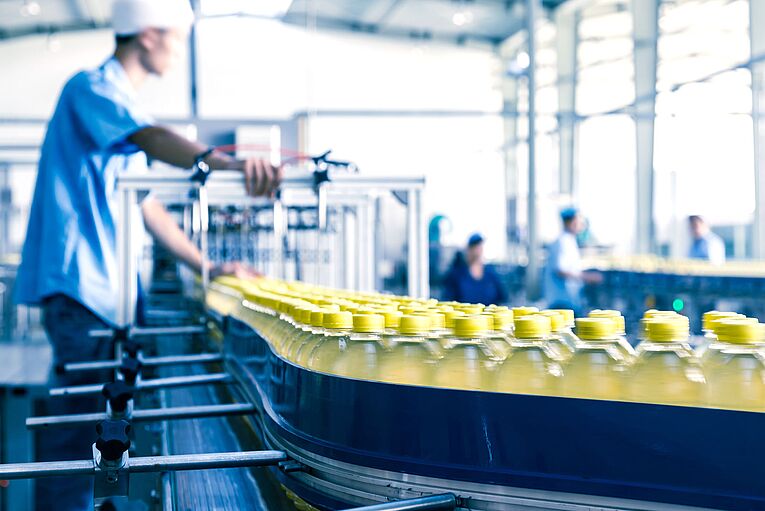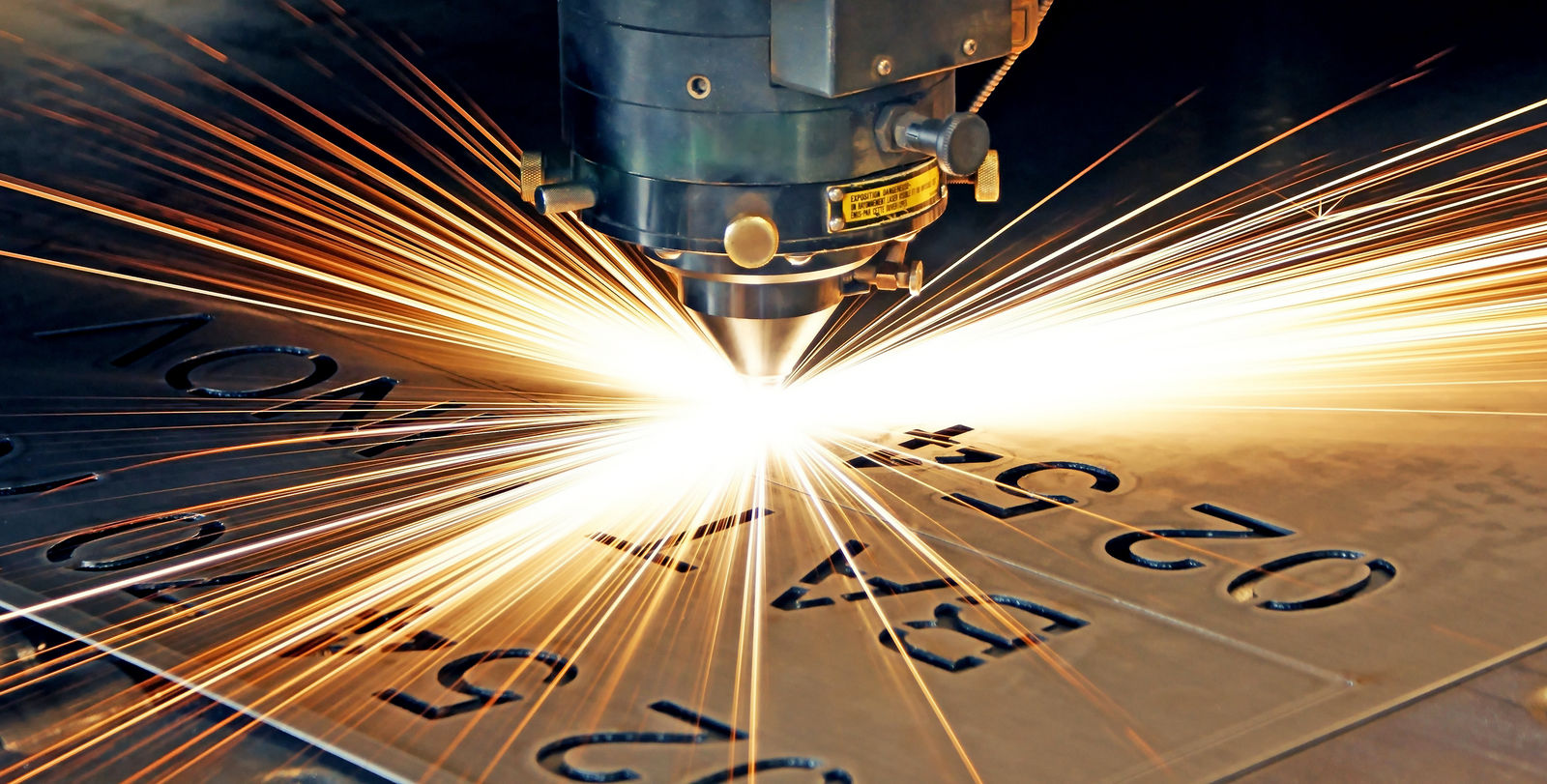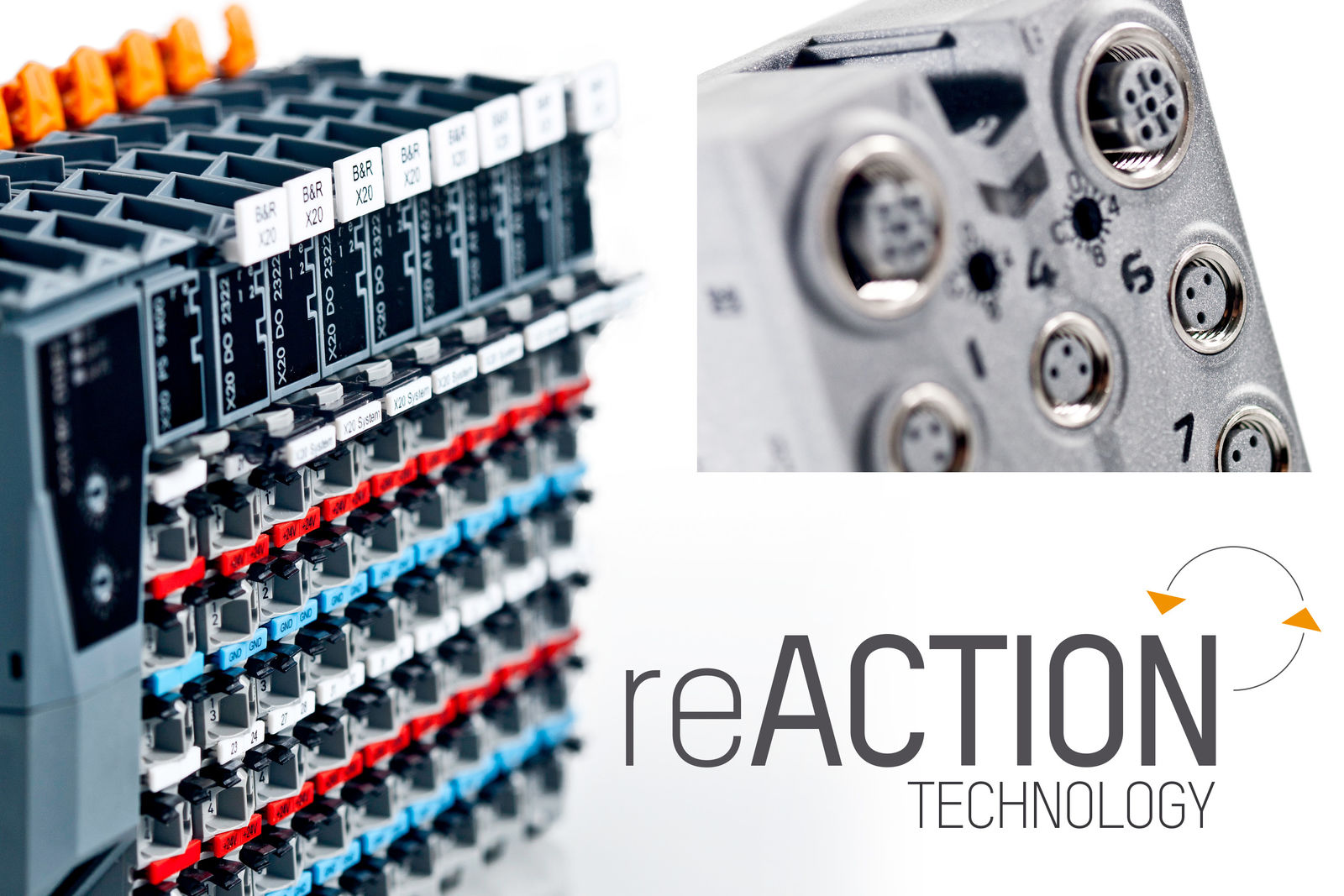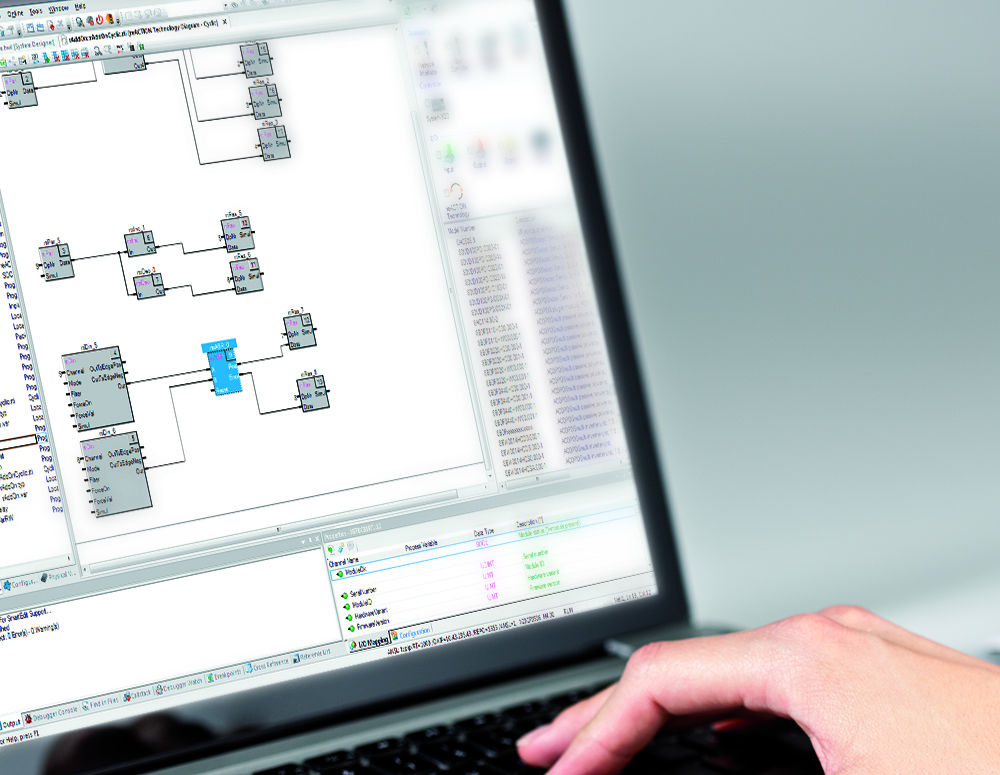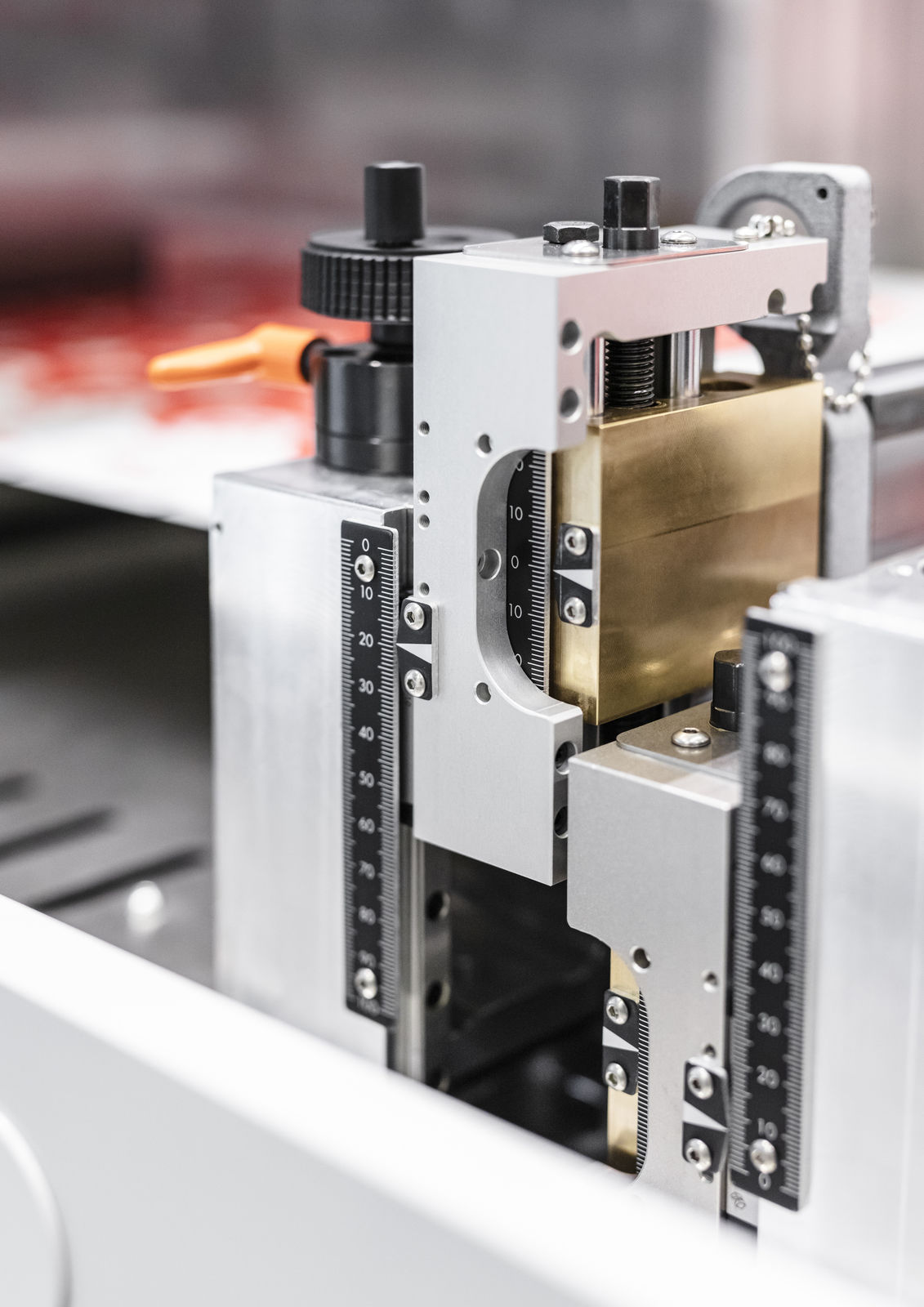The parameters for the reACTION module are calculated based on the current web speed. After the sensor reads the position, the following times elapse before marking can begin: 1 ms dead time in the sensor, 0.5 ms filter time (shorter signals are not permitted be processed), 0.04 ms processing time by the reACTION task (2x reACTION cycle time because in the worst case the signal is received shortly after the scan), and 2 ms dead time in the laser marking device. Thus, the fastest possible response time is 3.54 ms.
At the given distance of 55 mm, this results in the following maximum speed: 55 mm / 3.54 ms = 15.5 m/s = 932 m/min. In other words: the printer has the potential to run up to 55% faster than its current speed of 600 m/min – so nothing stands in the way of a new machine generation with higher web speed and higher throughput. With stories like this, B&R customers confirm time and again that premium automation performance can be achieved with the low cost and effort of off-the-shelf hardware and software.
